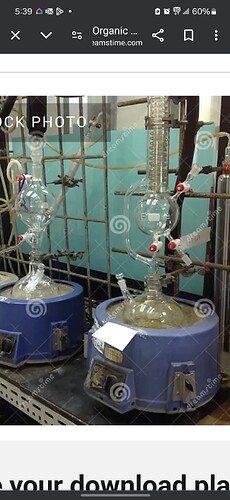So - the time has come. I feel manly and prepared to do a Tibal reaction. Yeah, the one with pyrophoric boom-boom on water contact. Li
I have a feeling US firefighting corps do I drill with this - but there are plenty of videos showing the ferocity of this catalyst.
As SWIM happened to have a kilo of this thing (in hexane, which gives me hope). I do not want it, but I don’t know how to get rid of it… ><
Not to through it away, heh?
- it the original patent for dronabinol. A medical version of delta-9 THC, which I believe has helped so many people, including myself.
So TIBAL conversion it was then. But there is one thing. I live in an area with 82% relative humidity. And my access to glassware is rather limited.
Unfortunately, I do not have an access to a fume hood either. The one I have I made myself using a fire-protected metal closet with a hole drilled and a fan attached to it. But nowhere near having good clamps and (gosh) a shlenks line.
But I think I know how to do it.
Being unfamiliar with cannula techniques and sure that my hands would be far from being surguon-like.
I haven’t even seen a Shlenks line in real life, but I guess that is very convenient.
My precautions are somewhat limited to not smoking pot on the day and having a fire extinguisher nearby.
I have decided do build a set up in an Argon bag. Just make a plastic enclosed bad with positive pressure, and do all the Tibal manipulations inside it. They aren’t difficult… Are they?
piercing the 1l Bottles tiny hole with a syringe, purge once inside the bag.
getting some Tibal out with a syringe, and then put it in a prepared oxygen-water-free flasks.
Closing the flasks/creating a positive nitrogen with a balloon if needed.
Then take the balloon out and then just maintain positive argon state of the reaction.
Can I do that btw? Or I have to use the 2 connections ( 1 argon/1vacuum the whole time?)
Scared as fck to be honest. I have an analytical lab in the same building, and a fire is the last thing I’d want.



